Abstract
A new experimental model for the study of two important aspects of ischemia, namely, oxygen and substrate deprivation, is proposed: the intact, beating fetal mouse heart in organ culture. This model offers long-term stability, ease and reproducibility of preparation, and the ability to manipulate experimental conditions. Hearts deprived of oxygen and glucose ceased beating immediately. After 3-4 hr of deprivation, biochemical and ultrastructural changes consistent with ischemic injury were evident. These include depletion of ATP and glycogen levels, loss of cytoplasmic enzymes, and extensive swelling and disruption of mitochondrial structure. Glucose and insulin partially protected against ATP depletion. Upon resupply of oxygen and glucose , beating resumed immediately, ATP levels rapidly increased to control levels and, consistent with this, mitochondrial structure returned toward normal. During the recovery phase autophagic vacuoles containing damaged mitochondria and myofibrils were seen, indicating that repair mechanisms were activated. Consistent with this, the proportion of lysosomal enzymes that were present in the nonsedimentable fraction of the tissue homogenate increased. We conclude that the cultured fetal mouse heart is a model useful for studying myocardial responses to anoxia and/or substrate deprivation and for assessing interventions designed to limit damage or to stimulate repair after ischemic injury.
Full text
PDF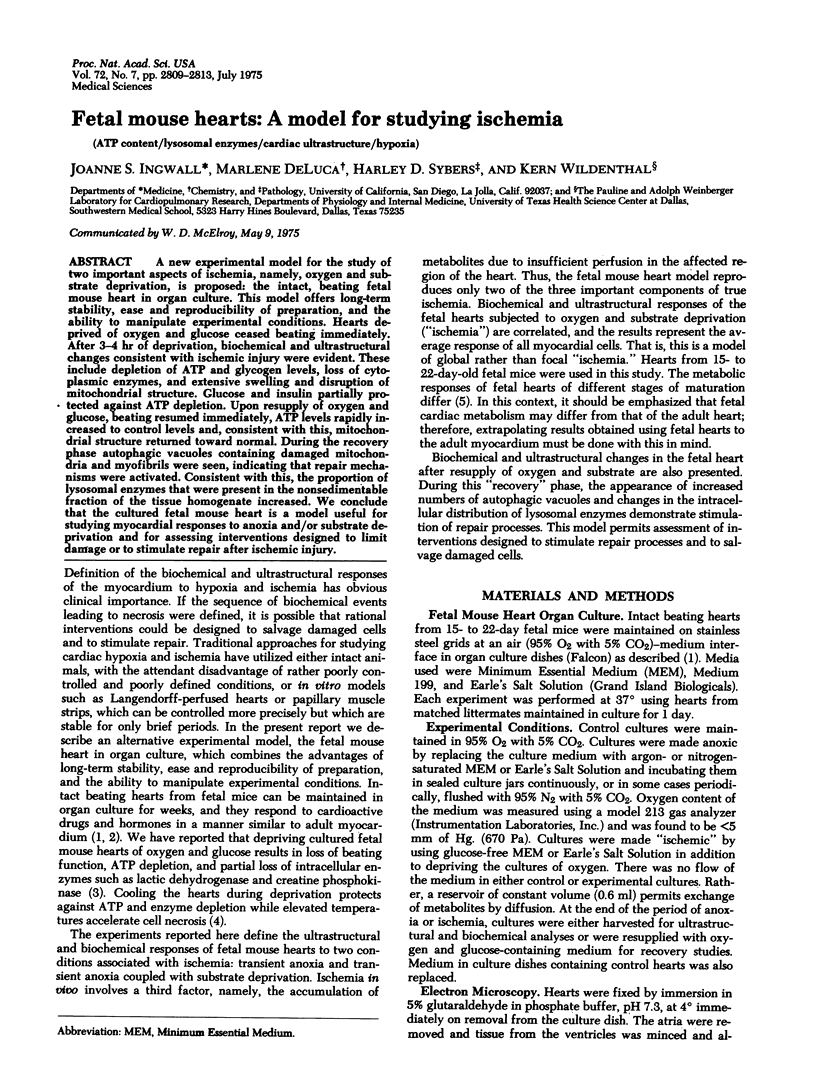
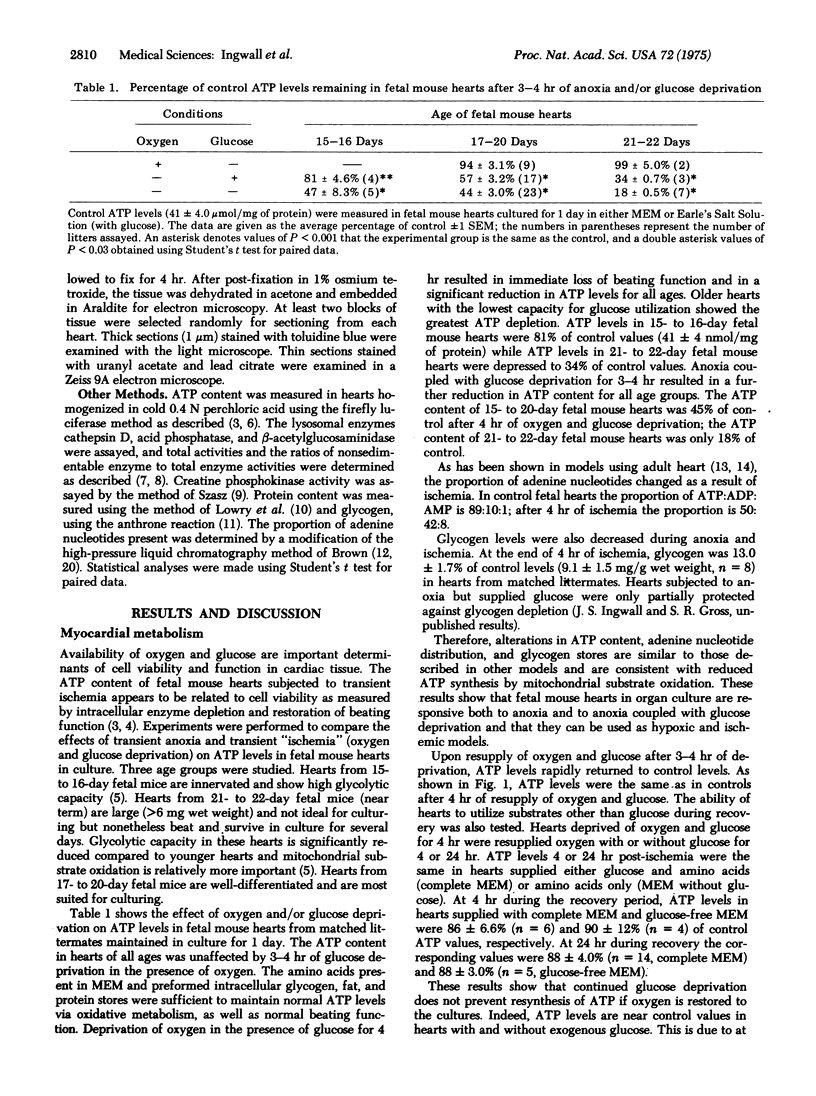
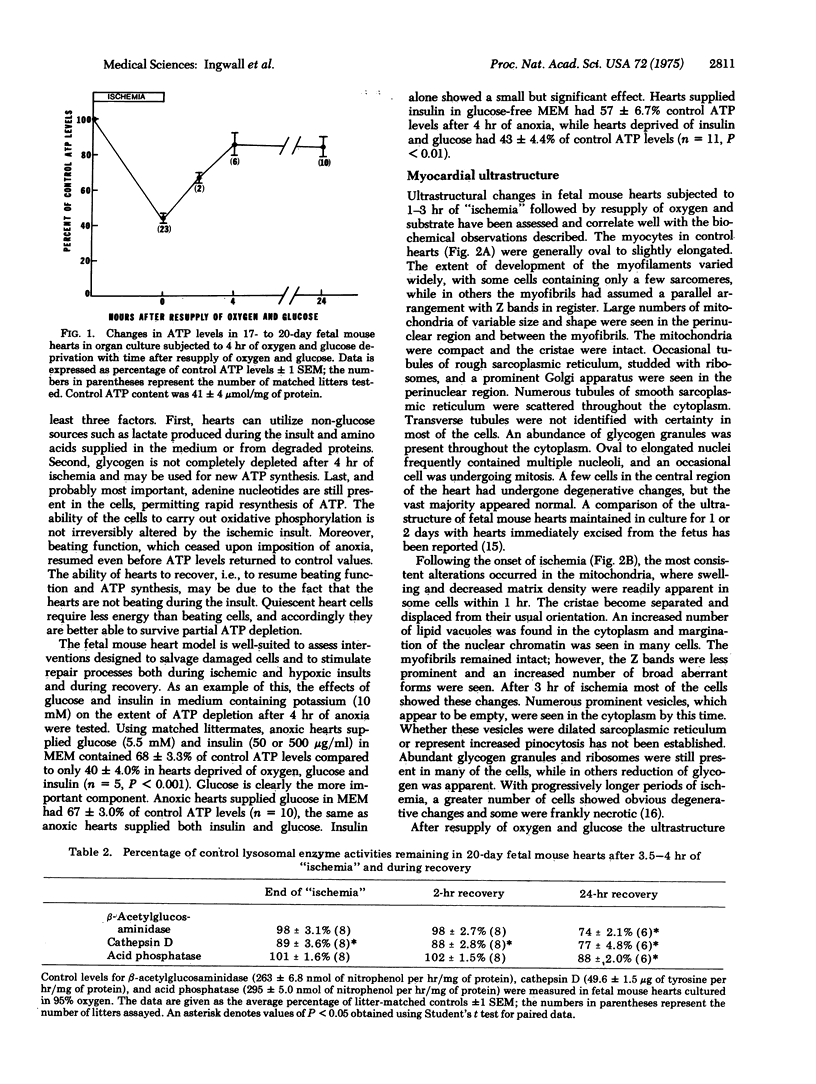
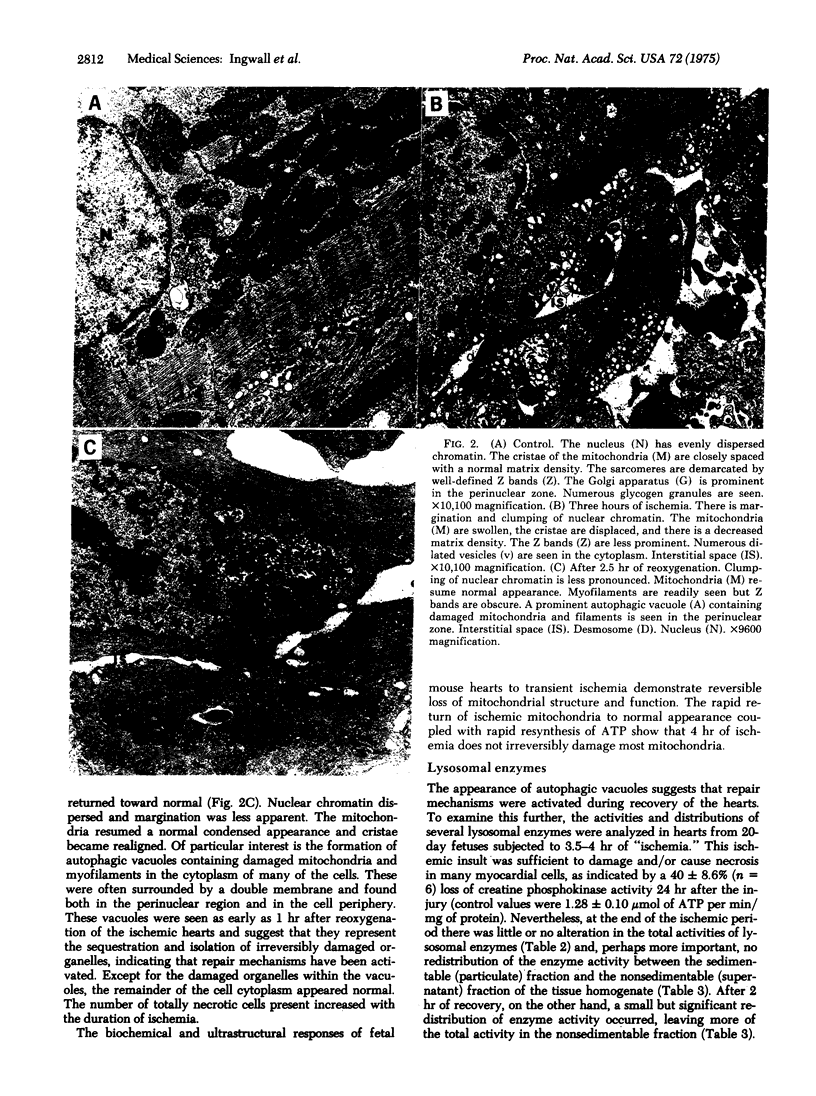
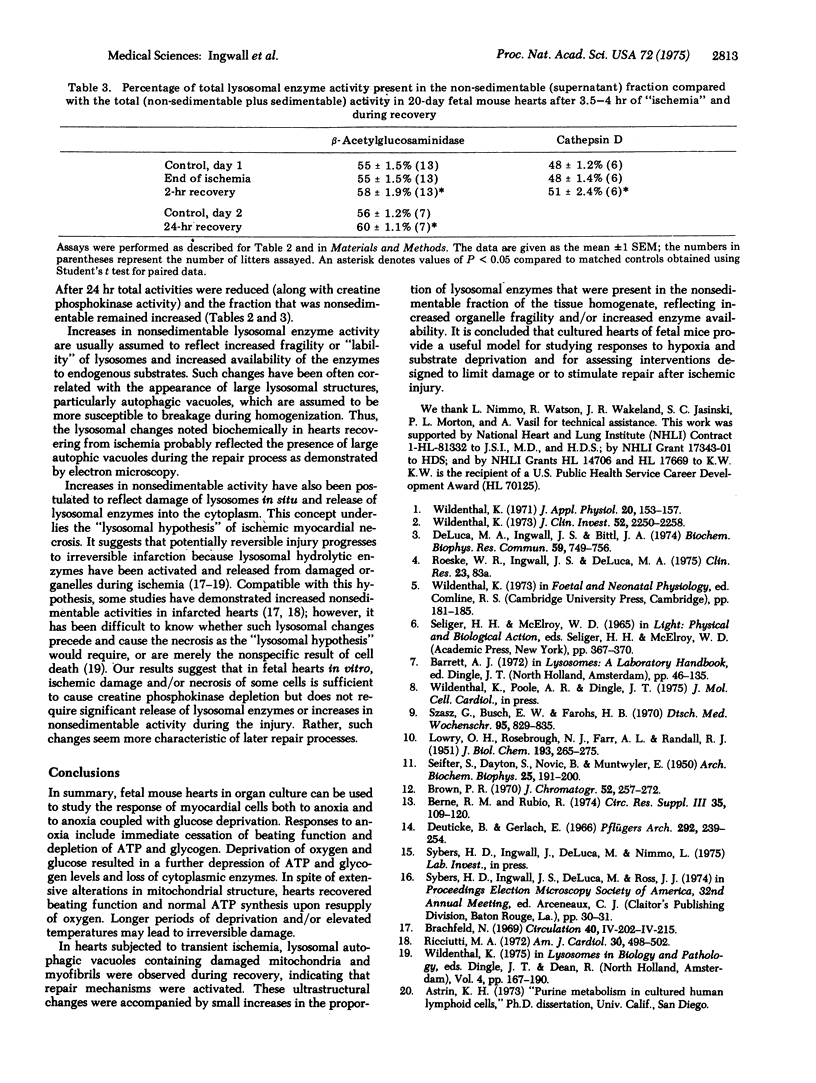
Images in this article
Selected References
These references are in PubMed. This may not be the complete list of references from this article.
- Berne R. M., Rubio R. Adenine nucleotide metabolism in the heart. Circ Res. 1974 Sep;35 (Suppl 3):109–120. [PubMed] [Google Scholar]
- Brown P. R. The rapid separation of nucleotides in cell extracts using high-pressure liquid chromatography. J Chromatogr. 1970 Oct 21;52(2):257–272. doi: 10.1016/s0021-9673(01)96573-2. [DOI] [PubMed] [Google Scholar]
- DeLuca M. A., Ingwall J. S., Bittl J. A. Biochemical responses of myocardial cells in culture to oxygen and glucose deprivation. Biochem Biophys Res Commun. 1974 Jul 24;59(2):749–756. doi: 10.1016/s0006-291x(74)80043-4. [DOI] [PubMed] [Google Scholar]
- Deuticke B., Gerlach E., Dierkesmann R. Abbau freier Nucleotide in Herz, Skeletmuskel, Gehirn und Leber der Ratte bei Sauerstoffmangel. Pflugers Arch Gesamte Physiol Menschen Tiere. 1966;292(3):239–254. [PubMed] [Google Scholar]
- LOWRY O. H., ROSEBROUGH N. J., FARR A. L., RANDALL R. J. Protein measurement with the Folin phenol reagent. J Biol Chem. 1951 Nov;193(1):265–275. [PubMed] [Google Scholar]
- Ricciutti M. A. Lysosomes and myocardial cellular injury. Am J Cardiol. 1972 Oct;30(5):498–502. doi: 10.1016/0002-9149(72)90040-9. [DOI] [PubMed] [Google Scholar]
- SEIFTER S., DAYTON S. The estimation of glycogen with the anthrone reagent. Arch Biochem. 1950 Jan;25(1):191–200. [PubMed] [Google Scholar]
- Szasz G., Busch E. W., Farohs H. B. Serum-Kreatinkinase. I. Methodische Erfahrungen und Normalwerte mit einem neuen handelsüblichen Test. Dtsch Med Wochenschr. 1970 Apr 10;95(15):829–835. doi: 10.1055/s-0028-1108548. [DOI] [PubMed] [Google Scholar]
- Wildenthal K. Long-term maintenance of spontaneously beating mouse hearts in organ culture. J Appl Physiol. 1971 Jan;30(1):153–157. doi: 10.1152/jappl.1971.30.1.153. [DOI] [PubMed] [Google Scholar]
- Wildenthal K. Maturation of responsiveness to cardioactive drugs. Differential effects of acetylcholine, norepinephrine, theophylline, tyramine, glucagon, and dibutyryl cyclic AMP on atrial rate in hearts of fetal mice. J Clin Invest. 1973 Sep;52(9):2250–2258. doi: 10.1172/JCI107411. [DOI] [PMC free article] [PubMed] [Google Scholar]



